Growing your own food can be super rewarding. Not only will it save you money in the long run, but you’ll love knowing exactly where your food has come from. But which food should you try growing first? Well, lettuce is a great place to start! If you’ve been considering growing and harvesting your own lettuce, this is your sign to go for it.
Don’t worry if you’re not a seasoned gardener – lettuce is one of the easiest veggies to grow. From choosing the right spot to post-harvest care, this complete guide will cover everything you need to know.
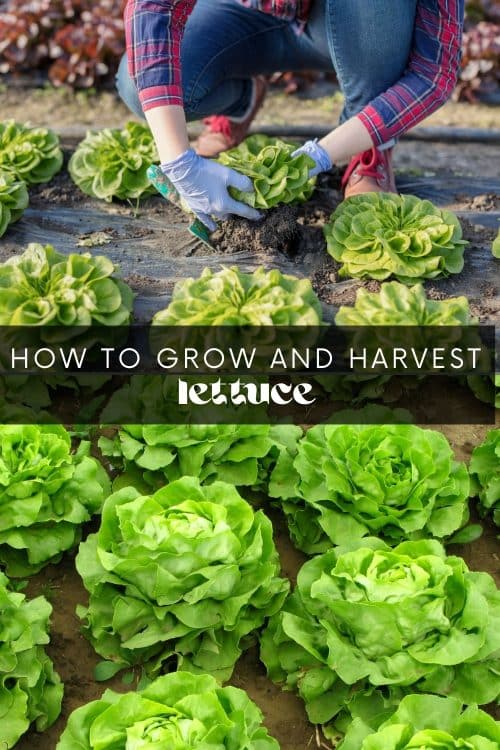
How to Choose the Right Type of Lettuce
There are many types of lettuce to choose from. But which one is the best for your garden? Consider these factors when deciding on the type of lettuce to grow:
- Climate: Lettuce thrives in cool weather. The best growing season for most lettuce types is spring or fall. Hot summers can alter the taste of this cool-season crop, while frost can kill it. Different places have different climates year-round, so keep the temperature in mind when choosing and planting your lettuce.
- Total Space: Do you have a large backyard garden or just a small indoor space? Not all lettuces grow the same size – some require more space than others.
- Taste: Lettuce comes in a range of flavors. While all types are delicious, it’s important to choose one that you and your family will enjoy.
- Growing Time: Compared to other vegetables, lettuce’s growing time is relatively short. But some varieties may take longer to mature than others. If you want quick results, choose a lettuce type that grows faster.
Different Varieties of Lettuce
Now that you know what to consider, let’s dive into some different varieties of lettuce you can choose from:
Butterhead
This type of lettuce has a soft, buttery texture and mild flavor. It’s perfect for salads and sandwiches. Butterhead lettuce loves full sun and takes around 45 to 60 days to reach full maturity. However, butterhead always tastes best when harvested slightly early.
Romaine
Romaine lettuce, also known as Cos lettuce, grows in a long, upright shape and has crisp leaves. It has a slightly stronger flavor than other lettuce and is great for Caesar salads. Romaine lettuce likes full sun but can deal well in partial shade and takes around 60 to 70 days to mature.
Iceberg
Iceberg, or crisphead lettuce, is known for its crunchy texture and mild flavor. It’s ideal for salads, sandwiches, and wraps. You’ll want to plant your iceberg lettuce in early spring for it to reach maturity within 55 to 90 days. Iceberg lettuce loves a full sun and well-draining soil.
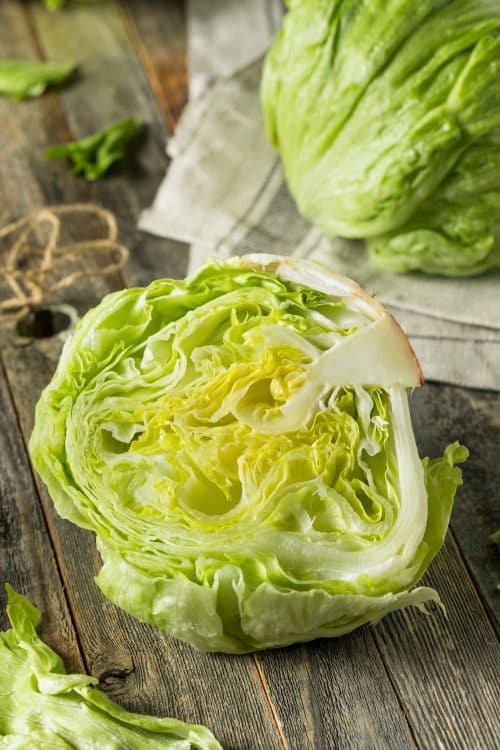
Loose-Leaf
Loose-leaf lettuce varieties come in a range of colors (including red and green) and textures. They have delicate leaves and are great for adding to salads or garnishing dishes. Loose leaf lettuce grows quickly, taking just 40 to 45 days to grow full size. They also prefer full sun but can tolerate partial shade.
Microgreens
These tiny greens are usually harvested after just 2 weeks of growth and are packed with nutrients. They can be grown in container gardens indoors, making them perfect for those without outdoor space. You can grow microgreens from any lettuce plant, but some popular choices include arugula and little gem.
How to Prepare Your Garden for Lettuce
There are 3 main things to consider before planting your lettuce: location, soil, and containers.
If you’re planting your lettuce directly in the ground, choose a spot that receives at least 6 hours of sunlight daily. Most lettuce types thrive in full sun and often grow fastest when placed in direct sunlight. Some varieties can tolerate partial shade, and sometimes shade is needed, especially in hot climates.
If you sowed your seeds a little later in the season, choosing somewhere with partial shade is best to prevent your lettuce from bolting in the summer sun (when it starts to flower and produce seeds).
As for the soil conditions, lettuce prefers well-draining soil high in organic matter. You can improve your garden’s soil by adding compost or manure before planting. Fertilizer is also a good idea, but not necessary.
The Down to Earth Organic Vegetable Garden Fertilizer is perfect for those who prefer an organic fertilizer!
Finally, choose a container at least 6-10 inches deep if not planted directly in the ground. Lettuce has shallow roots and doesn’t always require a lot of space. Just consider the size of the plant when choosing a container, as heads of lettuce can get quite large.
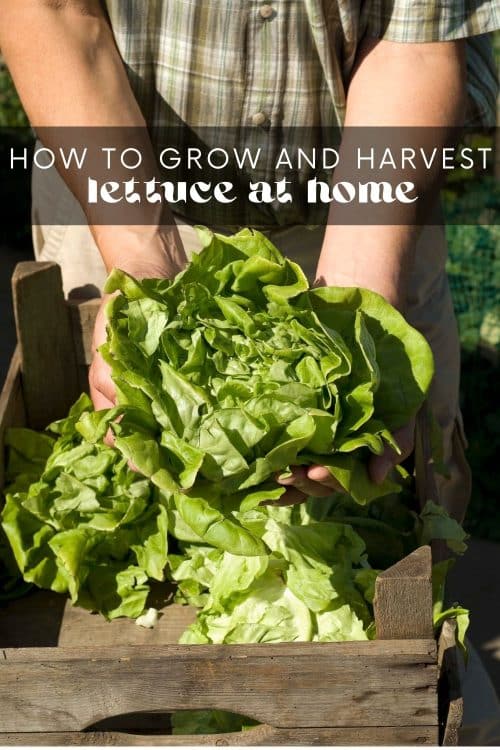
Lettuce Seeds vs Seedlings
Should you start your lettuce garden from seeds or seedlings? The decision is up to you!
Most lettuce varieties are easily grown from seeds. This means you can start your lettuce garden by sowing seeds directly into the ground or containers.
But if you want to get a head start and have an early harvest, lettuce seedlings are the best option. You can either grow your own seedlings in a tray or buy some from a local nursery. If growing them yourself, I would start them indoors for 3-4 weeks before transplanting them outside. This will give them enough time to establish strong roots.
How to Grow Lettuce
You’ve chosen the perfect spot, prepared the soil, and have your seeds or seedlings ready to go. Now it’s time to start growing your lettuce! Here are some helpful tips for growing lettuce:
- Rake the soil to create a flat and even surface. Add in some compost or fertilizer if needed. Always remove any weeds or debris from your garden beds before planting.
- Water the soil lightly before planting. This will help loosen it up and make it easier for seeds to germinate.
- Plant the seeds or seedlings according to their recommended spacing, usually found on the package or label. They don’t need to be planted deep – just 1/2 inch deep for seeds. If planting in rows, leave 12 inches between each row.
- Once planted, lightly cover the seeds or seedlings with soil and gently water them in.
- Thin out the lettuce seedlings once they start to grow. This means removing some of the young plants so those left have enough space to grow and mature.
- Succession planting of lettuce every 2-3 weeks to ensure a continuous harvest throughout the season.
Lettuce can be grown amongst other vegetables, like carrots or tomatoes. They also look great in flowerbeds to add a pop of green.
If growing in a container or bag, place it in a sunny spot, and don’t overcrowd the plants!
How to Care for Lettuce Plants
You don’t want all your hard work to be for nothing! So long as you’ve planted them in the correct season, you should have no problems growing lettuce. However, here are some tips for caring for your plants to ensure a successful harvest.
Watering
Lettuce likes consistent moisture, but not too much. Watering the plants deeply once a week should be enough, depending on your climate and soil type. If you’re experiencing hot weather or a heatwave, keep the soil moist and provide some shade for the plants. If the top layer of soil feels dry, it’s time to water again.
Lettuce grown in containers may need to be watered more frequently, as the soil can dry out faster. Check the soil daily and water when needed.
Pest Control
Slugs, snails, and caterpillars love a good lettuce! While they are just doing what comes naturally, they can cause significant damage to your plants.
Avoid wetting the lettuce leaves when watering, as this can attract pests. You can also use barriers like copper tape and eggshells to deter them. If you do find pests on your plants, handpick them off or use an insecticidal spray.
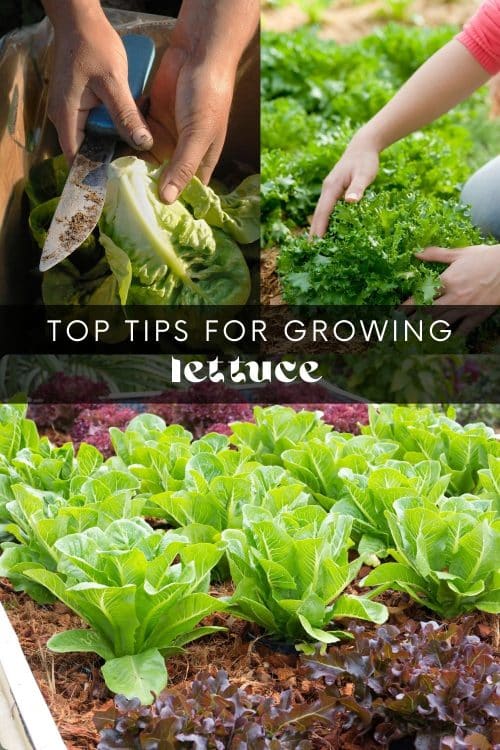
Weeding
Keep your lettuce bed or container free of weeds to prevent competition for water and nutrients. Regularly remove any weeds that pop up around your plants.
Bolting (Flowering)
Bolting happens when lettuce plants start to produce flowers and go to seed, making the leaves taste bitter and tough. This usually occurs when the weather gets too hot for the plant. If you notice your lettuce starting to bolt, harvest it immediately before the leaves become bitter.
If your leafy greens are in a container, try moving it to a shadier spot to see if that helps prevent bolting.
How to Harvest Lettuce
Your lettuce is ready for harvest as soon as it reaches your desired size. Harvesting lettuce is super simple and can be done in two ways:
- Cut-and-come-again method: This is a very common way to harvest lettuce. Simply cut off the outer leaves, leaving the center of the plant intact. The plant will continue to produce new leaves, and you can keep harvesting as needed. This is best done early to mid-growing season before the weather becomes too hot or cold.
- Harvesting full heads: If you prefer larger, more mature heads of lettuce, wait until the lettuce has reached full maturity. Then, you can just pull up the entire plant, roots, and all. This method will give you a one-time harvest but an entire head of lettuce.
Whichever method you choose, you’ll want to either use your hands or a sharp knife to make clean cuts. The early morning gives the best results when harvesting your lettuce. This is when the leaves are at their peak crispness and flavor.
How to Store Lettuce
Proper storage will help your lettuce stay fresh and crisp for longer. After harvesting, gently wash the leaves and pat them dry. Don’t worry about drying them off completely, as a bit of moisture will actually help keep the leaves crisp.
Avoid cutting full heads of lettuce until you are ready to use them. Whole heads will last longer than cut ones.
To store loose leaves, wrap them in a paper towel and place them in the crisper drawer of your refrigerator. This will help maintain a cool and slightly humid environment, which is ideal for storing lettuce.
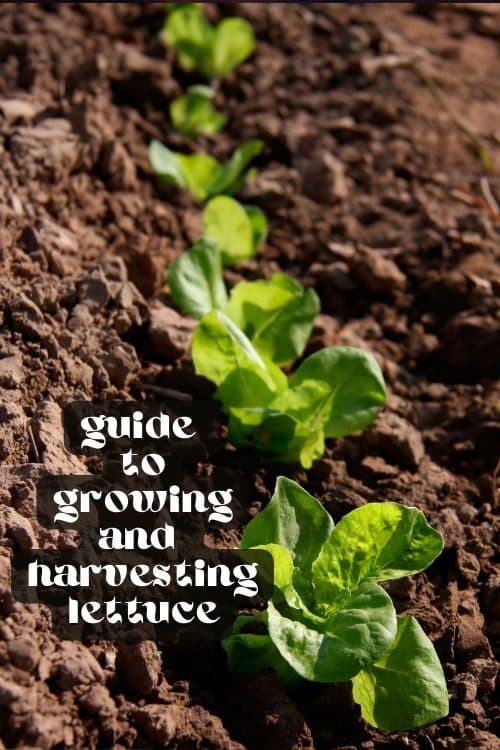
How to Serve Homegrown Lettuce
There are endless ways to enjoy your freshly harvested lettuce! Salads are, of course, a classic option, with grilled chicken Caesar salad, Buffalo chicken salad, and chopped steak salad being some of my favorites. You can also enjoy your lettuce with a simple dressing, like a balsamic vinaigrette or homemade ranch.
Lettuce is also great for sandwiches and wraps, adding a refreshing crunch to any lunch option.
And don’t forget about using it as a side for heartier meals! Taco casserole, cowboy steak, and Greek lamb chops all pair well with a side of fresh lettuce.
However you serve it, the satisfaction of growing and using your own lettuce will add a new level of enjoyment to your meals. Plus, you’ll know exactly where your food comes from and can take pride in eating something you grew yourself!
Check out these Gardening Posts:
- DIY Tall Planter Box
- DIY Self-Watering Window Boxes
- When to Plant?
- How to Set Up a Garden Drip System
- Gardening Tips for Beginners
- Winter Squash Storage
- Tips for Growing Herbs Indoors
- Building Raised Wooden Planter Boxes
- Starting Plants from Seed Indoors
- How to Make Hummingbird Food
- How Long Do Potatoes Take to Grow?
- How to Grow and Harvest Lettuce
- The 5 Best Soil Moisture Meters
- How to Grow Jalapenos
- How to Grow Green Onions
- How to Grow Big Tomatoes in Pots
- How to Grow Broccoli
- How to Grow a Corn Plant
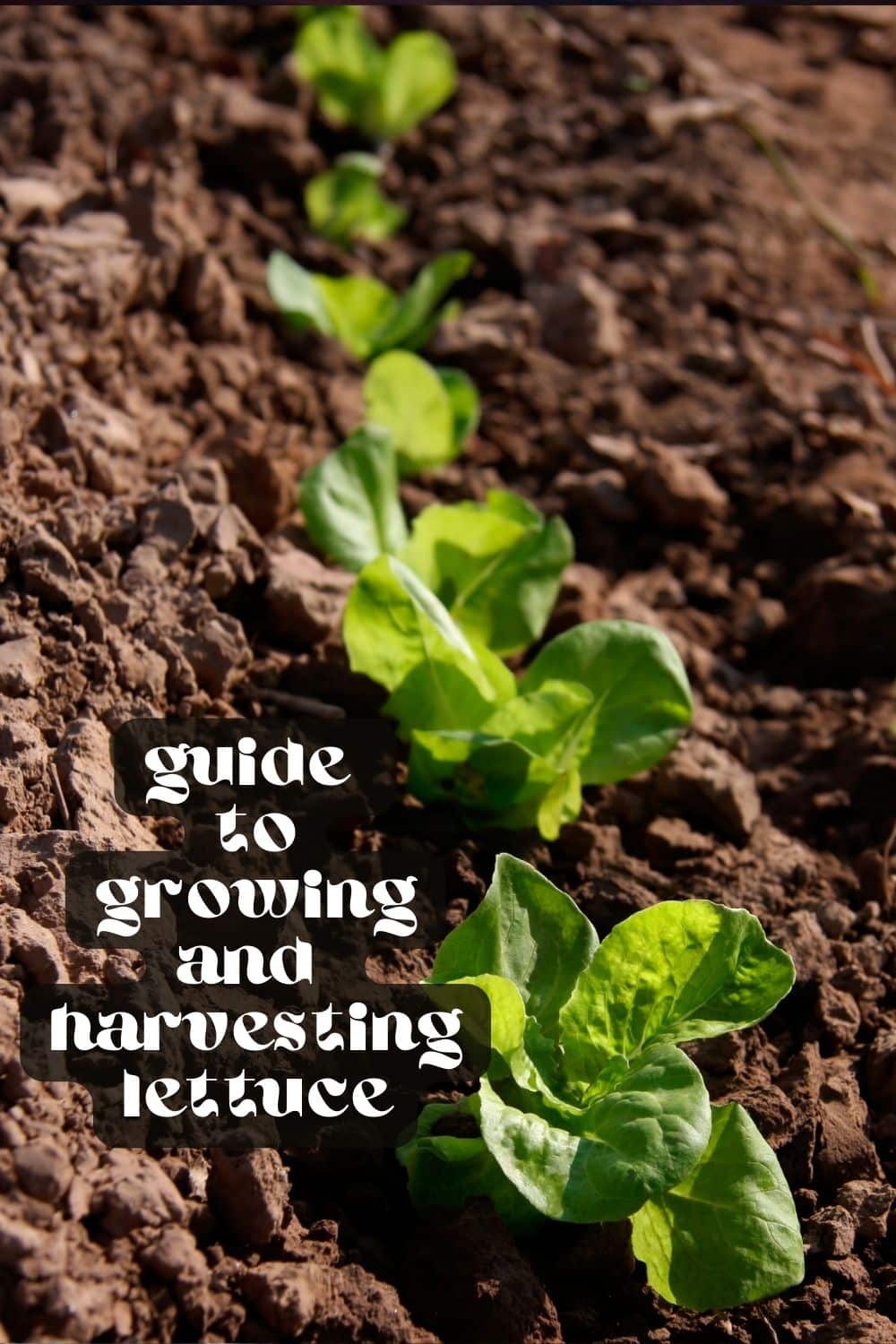
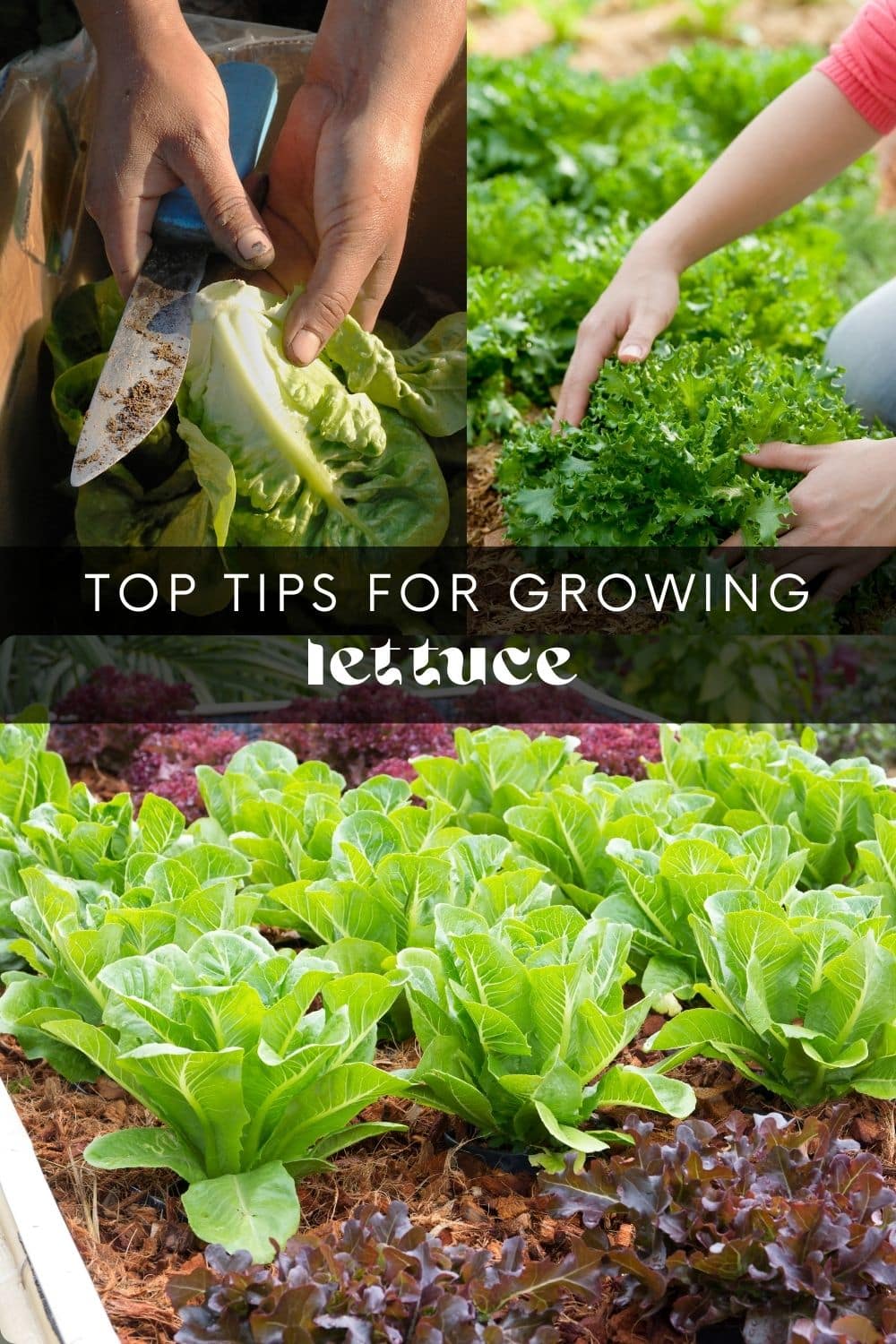
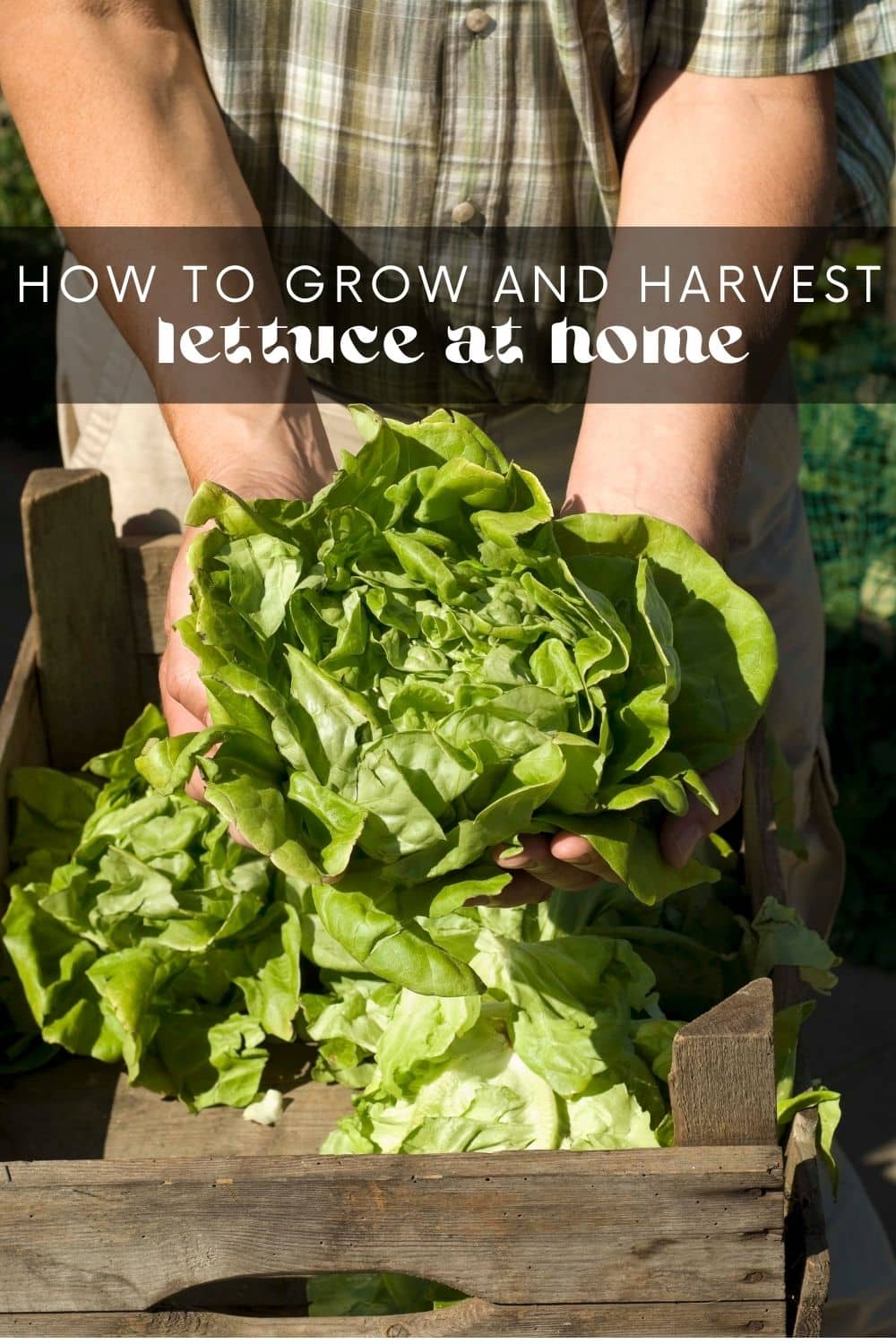




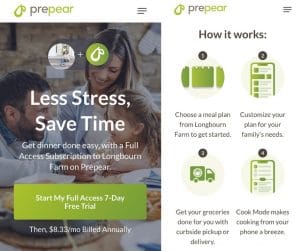

[…] also make great companion plants for lettuce, onions, cilantro, and asparagus! Add these to your raised bed for a delicious and diverse […]